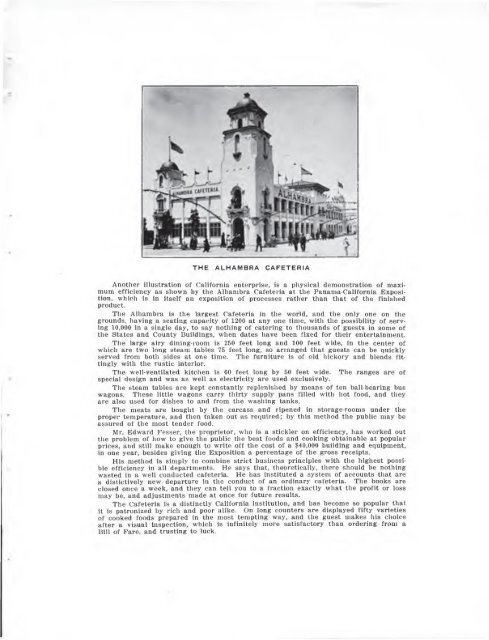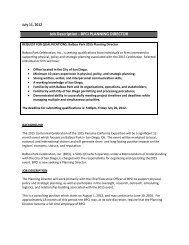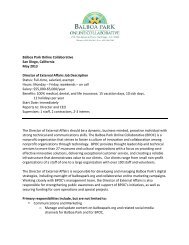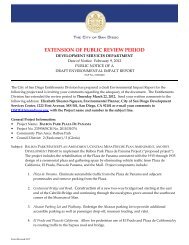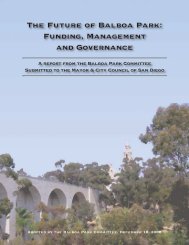Army and Navy Review 1915 Panama-California Edition - Balboa Park
Army and Navy Review 1915 Panama-California Edition - Balboa Park
Army and Navy Review 1915 Panama-California Edition - Balboa Park
You also want an ePaper? Increase the reach of your titles
YUMPU automatically turns print PDFs into web optimized ePapers that Google loves.
T H E ALH AM BR A C A FETER IA<br />
Another illustration of <strong>California</strong> enterprise, is a physical demonstration of maximum<br />
efficiency as shown by the Alhambra Cafeteria at the <strong>Panama</strong>-<strong>California</strong> Exposition,<br />
which is in itself an exposition of processes rather than that of the finished<br />
product.<br />
The Alhambra is the largest Cafeteria in the world, <strong>and</strong> the only one on the<br />
grounds, having a seating capacity of 1200 at any one time, with the possibility of serving<br />
10,000 in a single day, to say nothing of catering to thous<strong>and</strong>s of guests in some of<br />
the States <strong>and</strong> County Buildings, when dates have been fixed for their entertainment.<br />
The large airy dining-room is 250 feet long <strong>and</strong> 100 feet wide, in the center of<br />
which are two long steam tables 75 feet long, so arranged that guests can be quickly<br />
served from both sides at one time. The furniture is of old hickory <strong>and</strong> blends fittingly<br />
with the rustic interior.<br />
The well-ventilated kitchen is 60 feet long by 50 feet wide. The ranges are of<br />
special design <strong>and</strong> was as well as electricity are used exclusively.<br />
The steam tables are kept constantly replenished by means of ten ball-bearing bus<br />
wagons. These little wagons carry thirty supply pans filled with hot food, <strong>and</strong> they<br />
are also used for dishes to <strong>and</strong> from the washing tanks.<br />
The meats are bought by the carcass <strong>and</strong> ripened in storage-rooms under the<br />
proper temperature, <strong>and</strong> then taken out as required; by this method the public may be<br />
assured of the most tender food.<br />
Mr. Edward Fesser, the proprietor, who is a stickler on efficiency, has worked out<br />
the problem of how to give the public the best foods <strong>and</strong> cooking obtainable at popular<br />
prices, <strong>and</strong> still make enough to write off the cost of a $40,000 building <strong>and</strong> equipment,<br />
in one year, besides giving the Exposition a percentage of the gross receipts.<br />
His method is simply to combine strict business principles with the highest possible<br />
efficiency in all departments. He says that, theoretically, there should be nothing<br />
wasted in a well conducted cafeteria. He has instituted a system of accounts that are<br />
a distictively new departure in the conduct of an ordinary cafeteria. The books are<br />
closed once a week, <strong>and</strong> they can tell you to a fraction exactly what the profit or loss<br />
may be, <strong>and</strong> adjustments made at once for future results.<br />
The Cafeteria is a distinctly <strong>California</strong> institution, <strong>and</strong> has become so popular that<br />
it is patronized by rich <strong>and</strong> poor alike. On long counters are displayed fifty varieties<br />
of cooked foods prepared in the most tempting way, <strong>and</strong> the guest makes his choice<br />
after a visual inspection, which is infinitely more satisfactory than ordering from a<br />
Bill of Fare, <strong>and</strong> trusting to luck.


